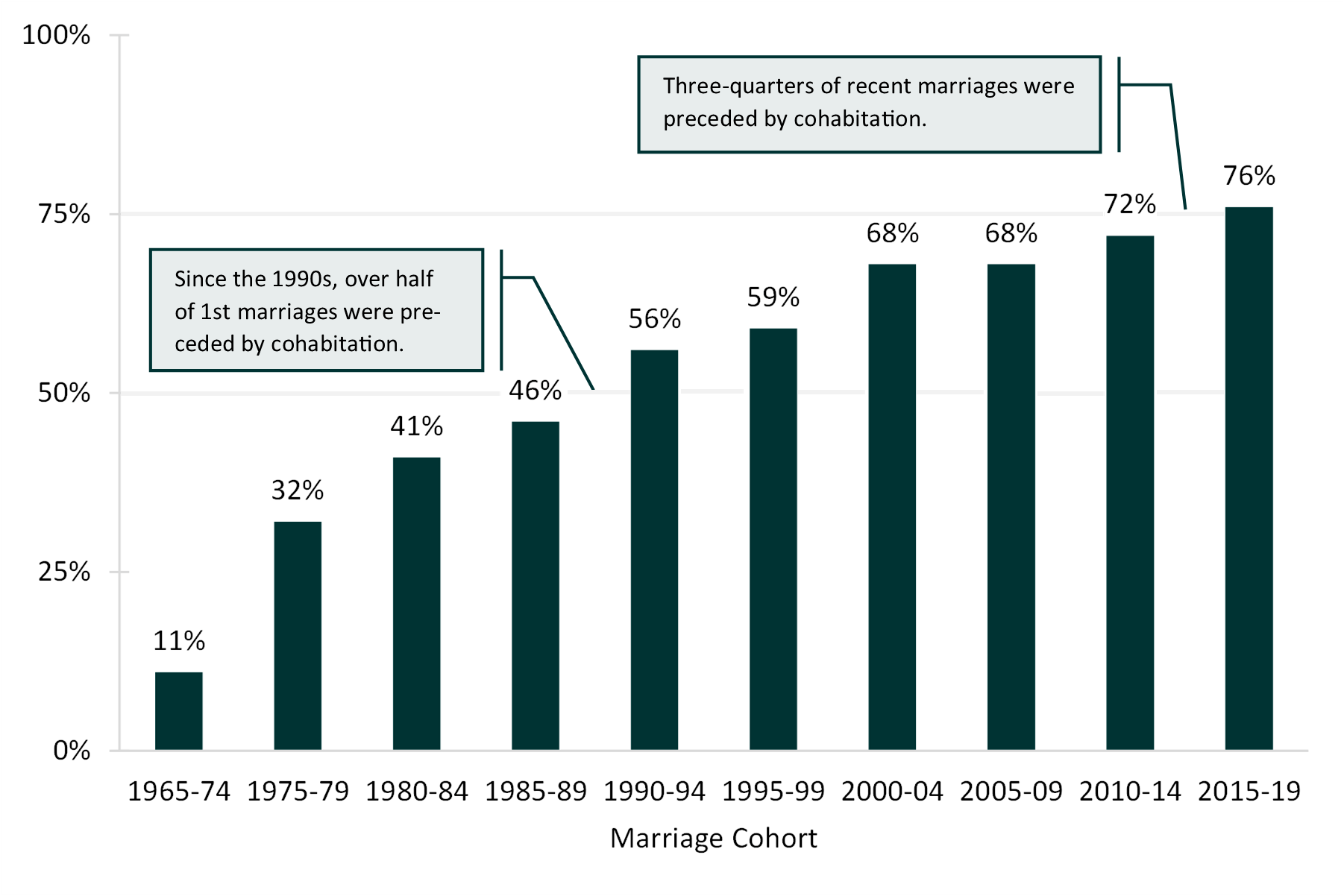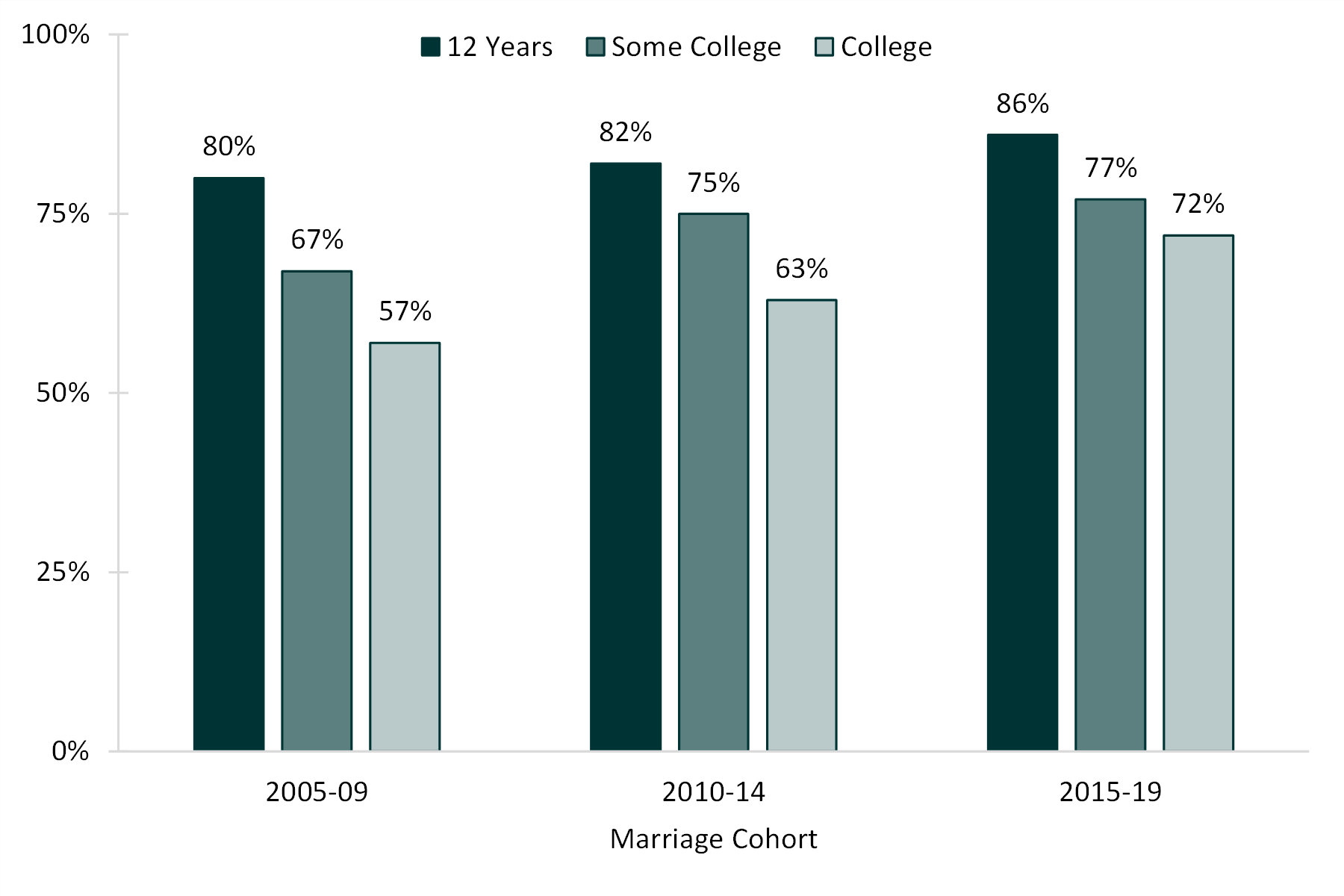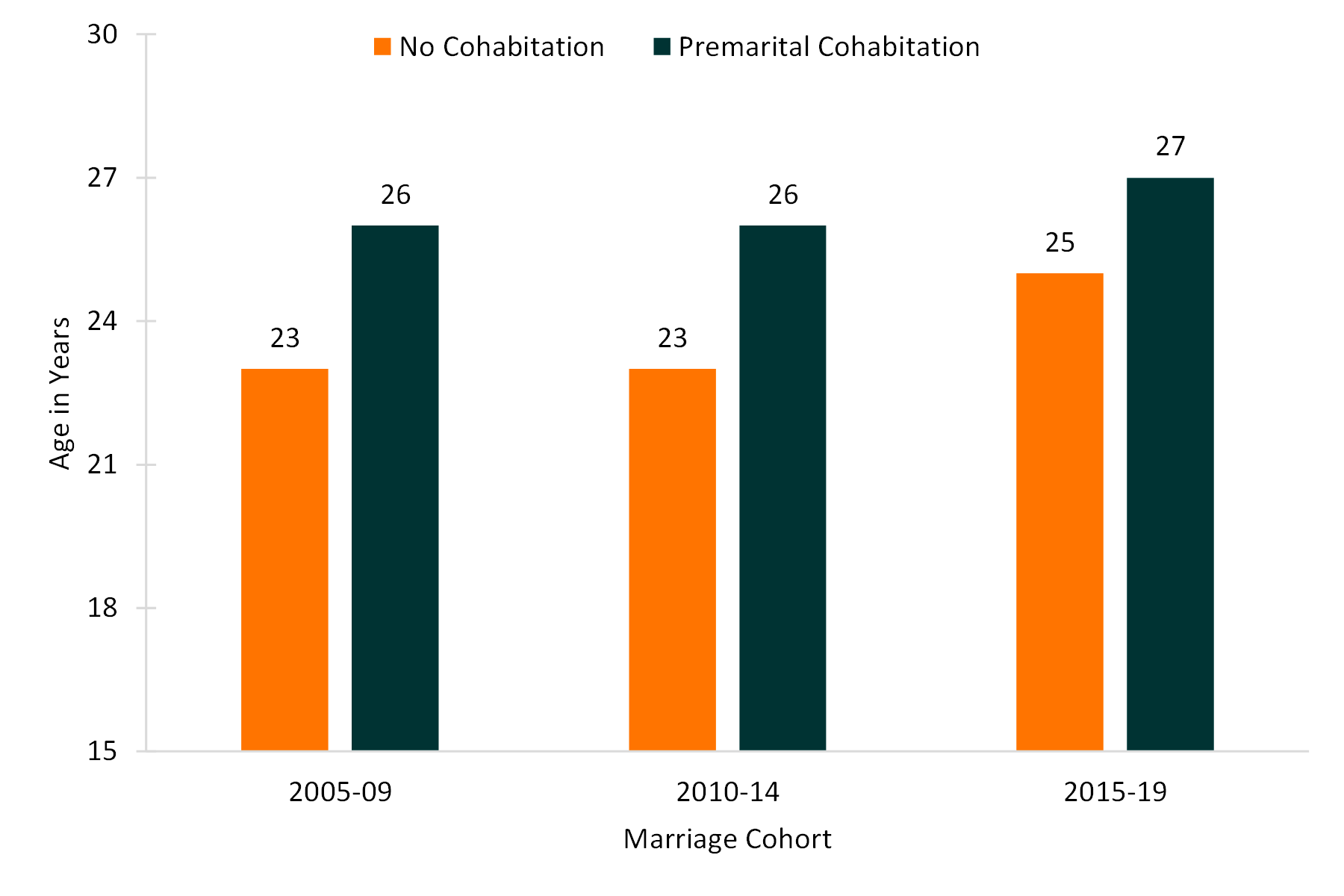Trends in Cohabitation Prior to Marriage
Family Profile No. 4, 2021
Authors: Wendy D. Manning & Lisa Carlson
Cohabitation prior to marriage has become a normative pathway to marriage in the U.S. The current profile examines shifts in the percentage of women who cohabited before marriage starting fifty years ago according to marriage cohorts. We report published results and use the National Survey of Family Growth (NSFG) to estimate the share of women who cohabited prior to marriage in each cohort. We also provide an up-to-date analysis comparing the experiences of two recent marriage cohorts (2005-2009 and 2015-2019). We present changes in premarital cohabitation according to educational attainment and present differentials in the age at marriage. Note that our analytical sample is not representative of the cohabitation experiences of all women in the U.S. because we only consider those who have ever married. This profile references different-gender couples due to data constraints in the NSFG. Check out the NCFMR profiles on cohabitation including FP-18-22, FP-19-02, & FP-20-12. For more information on the NSFG, see the 2017-2019 Cycle of National Survey of Family Growth and the NSFG web page (NCHS, 2020). All estimates are based on weighted analyses. The age restriction of 19 to 44-year-olds is imposed to allow comparisons across a long-time horizon.
Changes in Cohabitation Prior to Marriage, 1965-2019
- The vast majority of married couples lived with a cohabiting partner prior to marriage. Three-quarters (76%) of recent marriages (2015-2019) were preceded by cohabitation.
- A rising trend continued as the share of women who cohabited prior to marriage steadily increased.
Figure 1. Fifty Years of Change in the Share of Women (19-44) Cohabiting Prior to 1st Marriage, by Marriage Cohort


Three-quarters (76%) of recent marriages (2015-2019) were preceded by cohabitation.

Decade of Change in Cohabitation Prior to Marriage, Education, and Age
Educational Attainment
- The share of married women who cohabited prior to marriage has increased across education groups with the greatest increase among women who have a college degree.
- An educational convergence in premarital cohabitation is evident. The educational gap in premarital cohabitation has narrowed largely due to the increase among college graduates.
Figure 2. Decade of Change in the Share of Women (19-44) Who Ever Cohabited Prior to Marriage, by Educational Attainment

Median Age at Marriage
- The median age at marriage is higher, ranging from 26 to 27, among women who cohabited prior to marriage compared with women who did not cohabit prior to marriage.
- Women who did not cohabit prior to marriage experienced a slight uptick in the age at marriage, shifting from 23 to 25.
Figure 3. Median Age at Marriage by Premarital Cohabitation Status for Marriage Cohort

Data Source
- National Center for Health Statistics (NCHS). 2006-10, 2011-15, 2015-17, and 2017-2019 National Survey of Family Growth Public-Use Data and Documentation. Hyattsville, MD: CDC National Center for Health Statistics. Retrieved October 28, 2020. https://www.cdc.gov/nchs/nsfg/index.htm
Suggested Citation
- Manning, W. D. & Carlson, L. (2021). Trends in cohabitation prior to marriage. Family Profiles, FP-21-04. Bowling Green, OH: National Center for Family & Marriage Research. https://doi.org/10.25035/ncfmr/fp-21-04


This project is supported with assistance from Bowling Green State University. From 2007 to 2013, support was also provided by the U.S. Department of Health and Human Services, Office of the Assistant Secretary for Planning and Evaluation. The opinions and conclusions expressed herein are solely those of the author(s) and should not be construed as representing the opinions or policy of any agency of the state or federal government.
Updated: 04/13/2021 03:11PM

